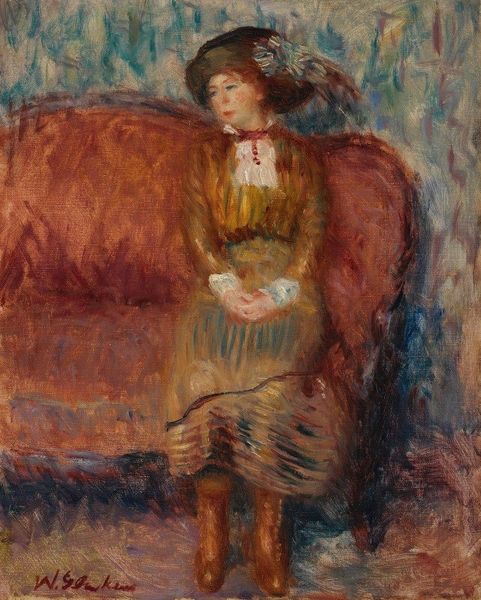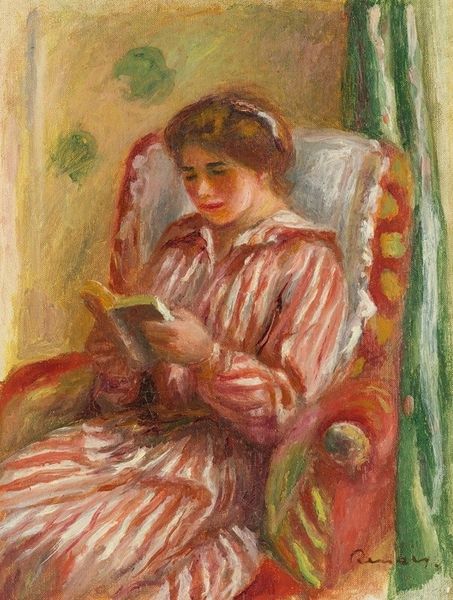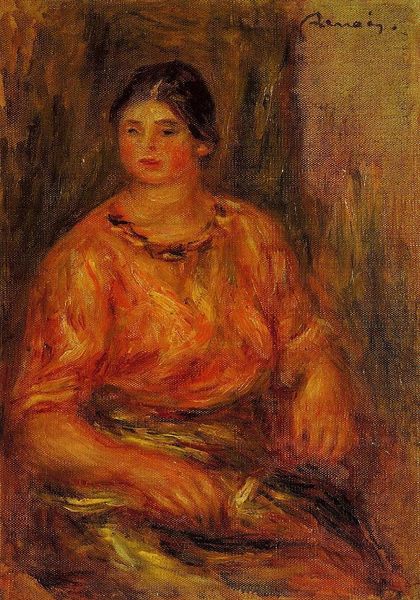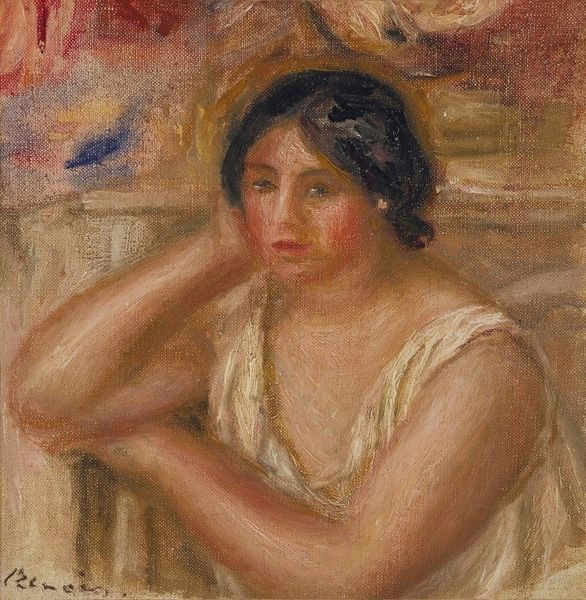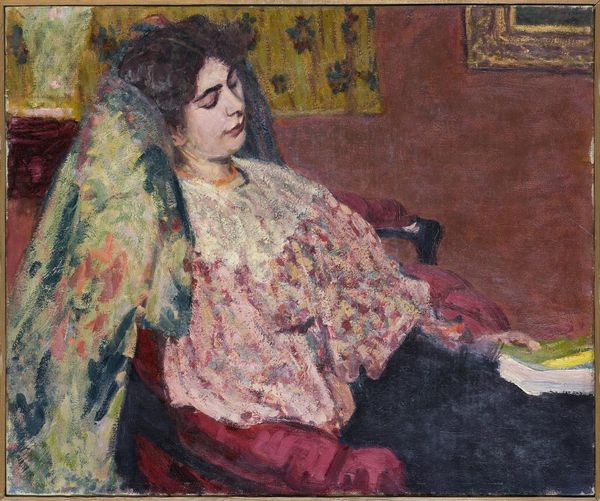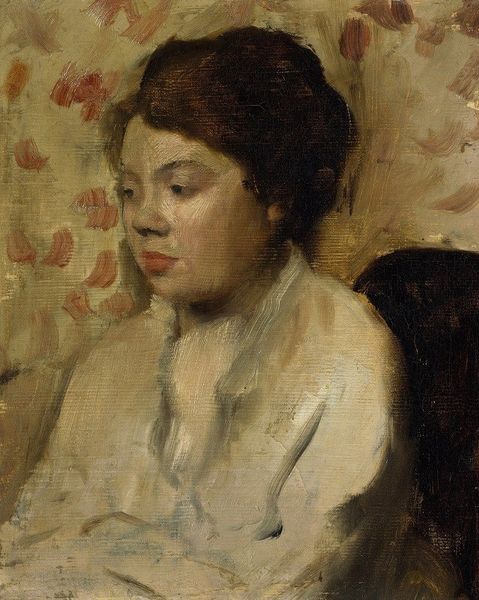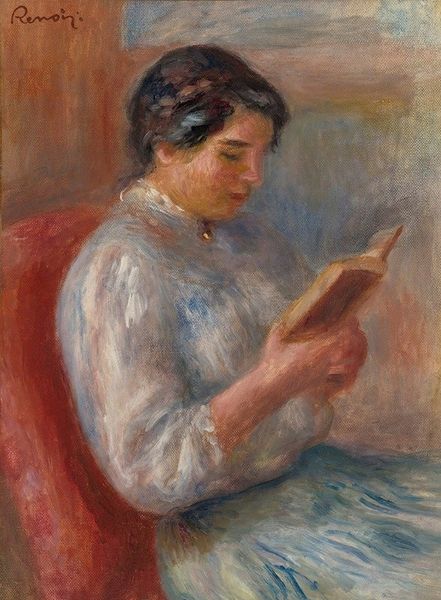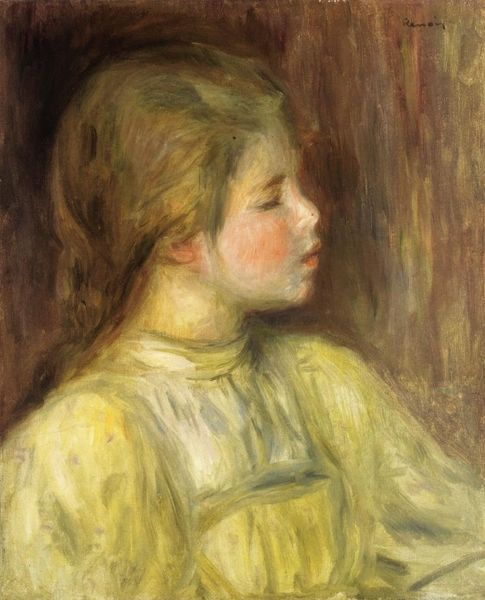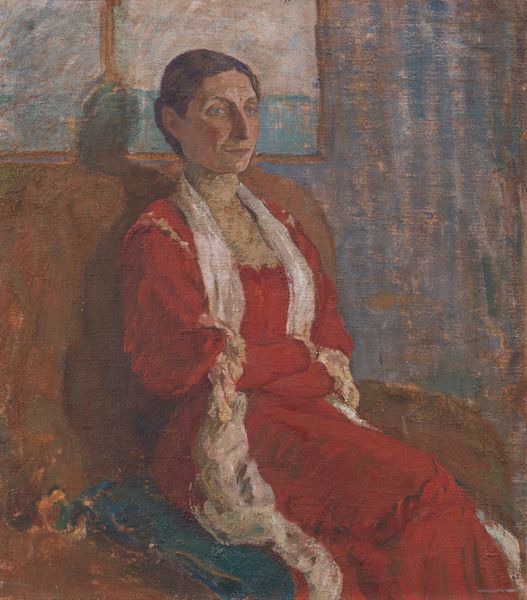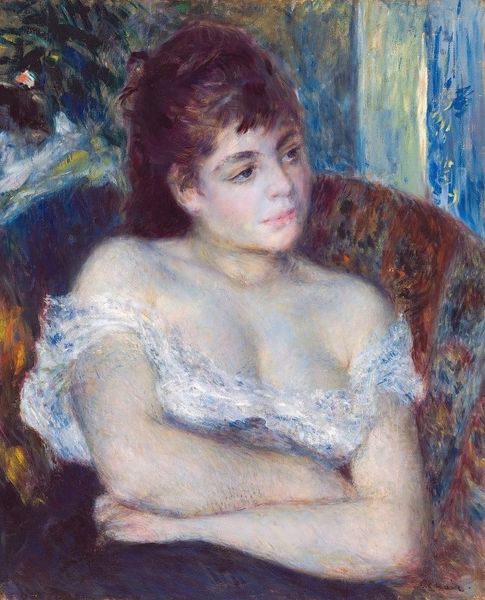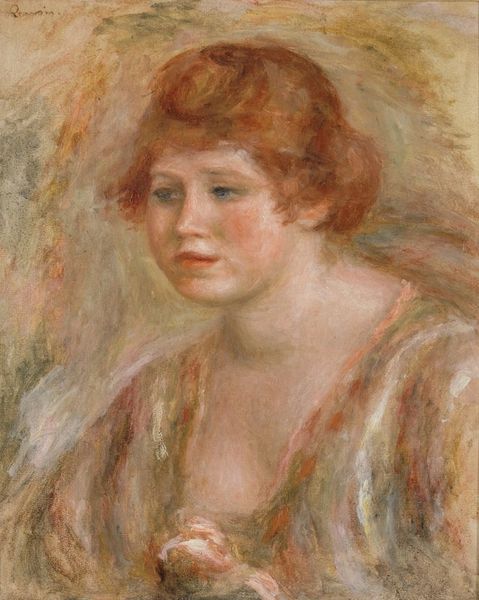
Copyright: Public Domain: Artvee
Editor: Here we have Pierre-Auguste Renoir's "Femme au Fauteuil Vert," painted around 1900, using oil on canvas. There's a soft, almost dreamlike quality to the piece that I find captivating. How do you interpret this work? Curator: I see this portrait as more than just a depiction of a woman; it’s a commentary on the social constraints placed on women during the turn of the century. The subject’s gaze is averted, almost melancholic. How much agency did women like her truly possess? Editor: That’s a fascinating perspective. I hadn't considered that. I was more focused on the Impressionistic brushstrokes and the use of color to create a sense of warmth and intimacy. Do you think the chair she's sitting in adds to that message? Curator: Absolutely. The elaborate, green armchair acts as a gilded cage, highlighting the woman’s confinement within a certain social stratum. Consider the implications of being a woman represented in art almost exclusively within the domestic sphere during that era. Does it offer freedom, or restrict it? Editor: That’s given me a lot to think about. It makes me question what Renoir was trying to convey. Was he celebrating female beauty, or subtly critiquing the limitations of their roles? Curator: It's in that tension, that ambiguity, where the power of art truly lies. By understanding the social and historical context, we can begin to unravel the complexities of the artist's intention and its impact on our understanding of identity, gender, and societal norms. Editor: This has completely shifted how I see the painting. I'll definitely be thinking about the broader context of art going forward. Curator: Exactly. Seeing art as part of this larger conversation encourages richer insights into our present.
Comments
No comments
Be the first to comment and join the conversation on the ultimate creative platform.
